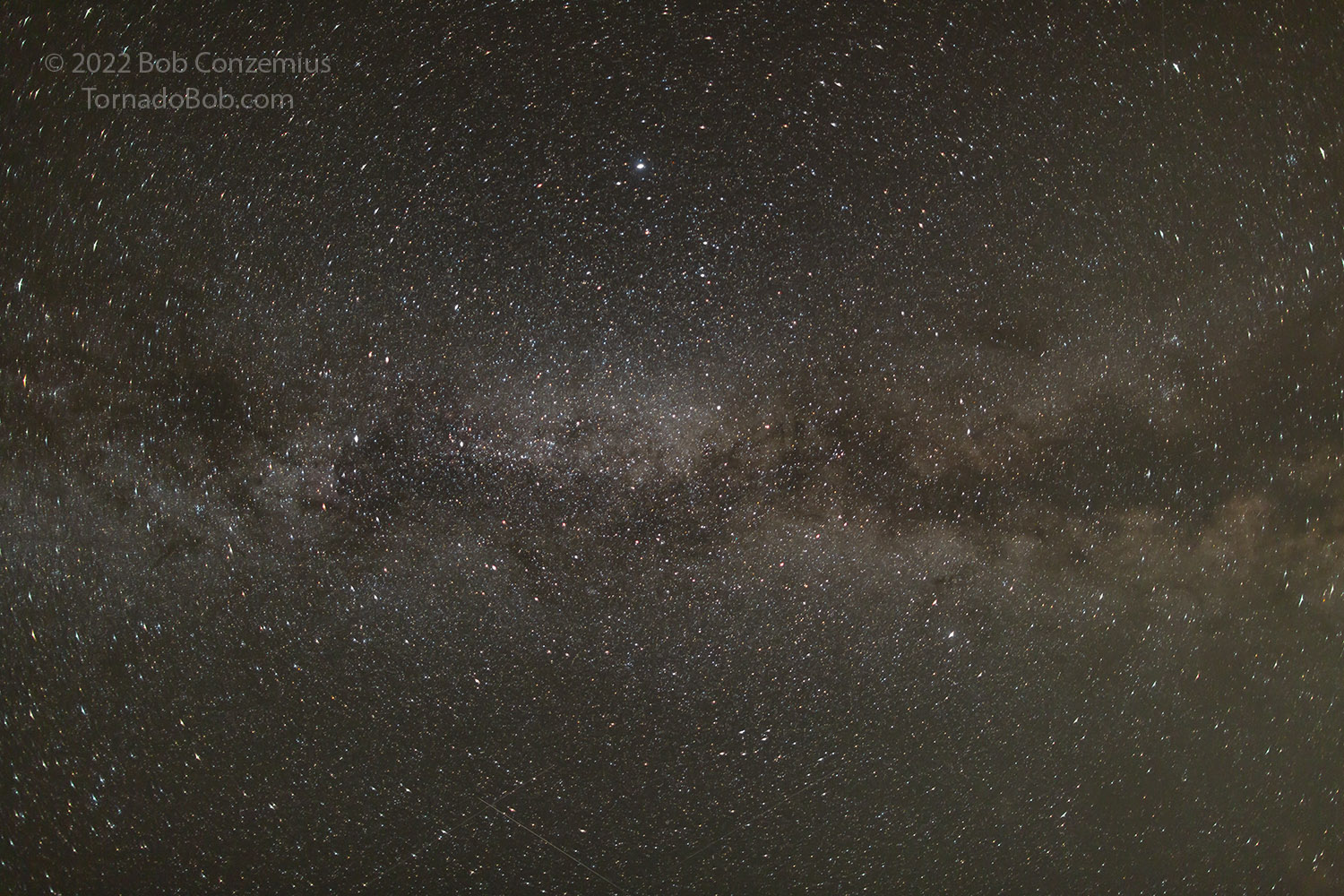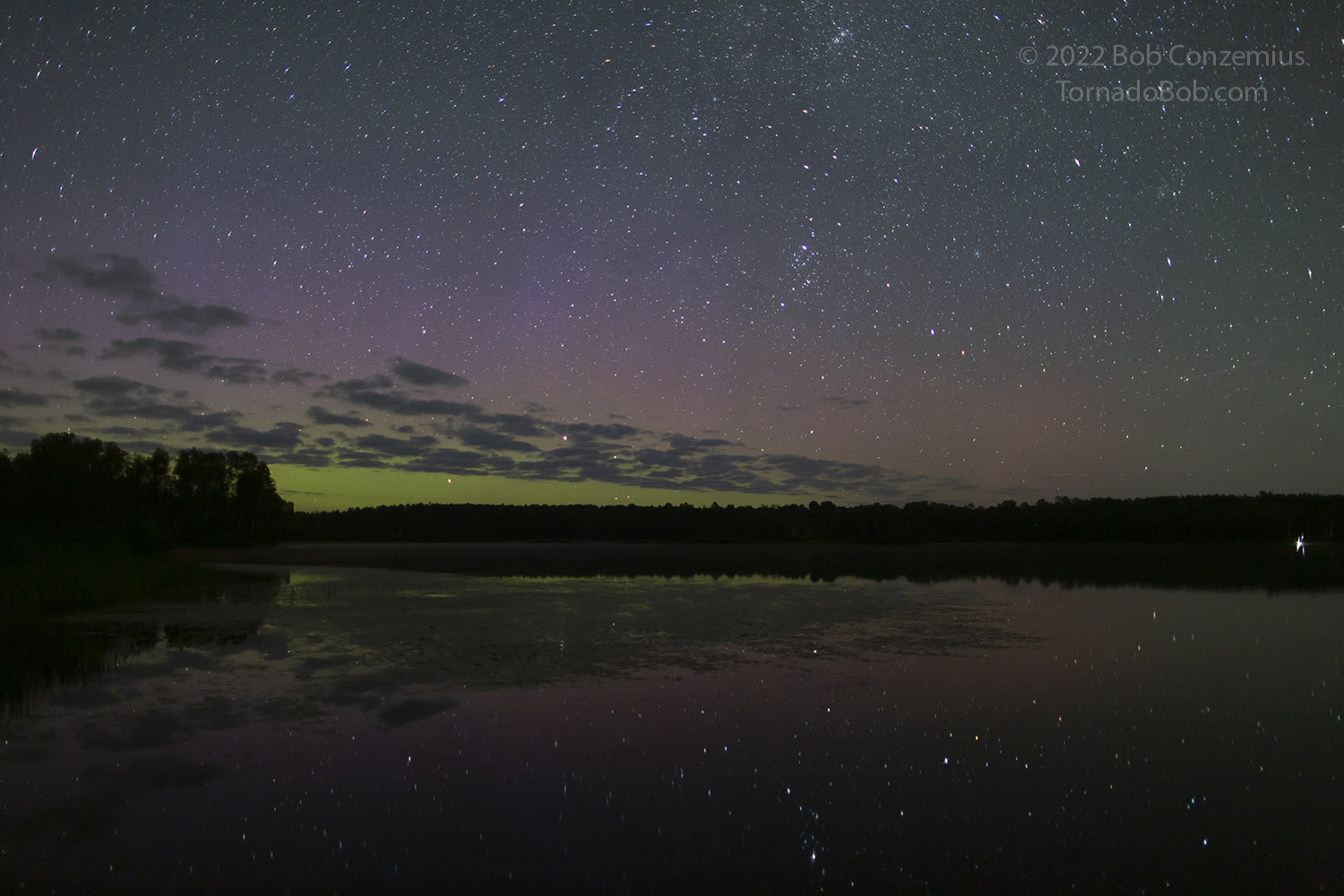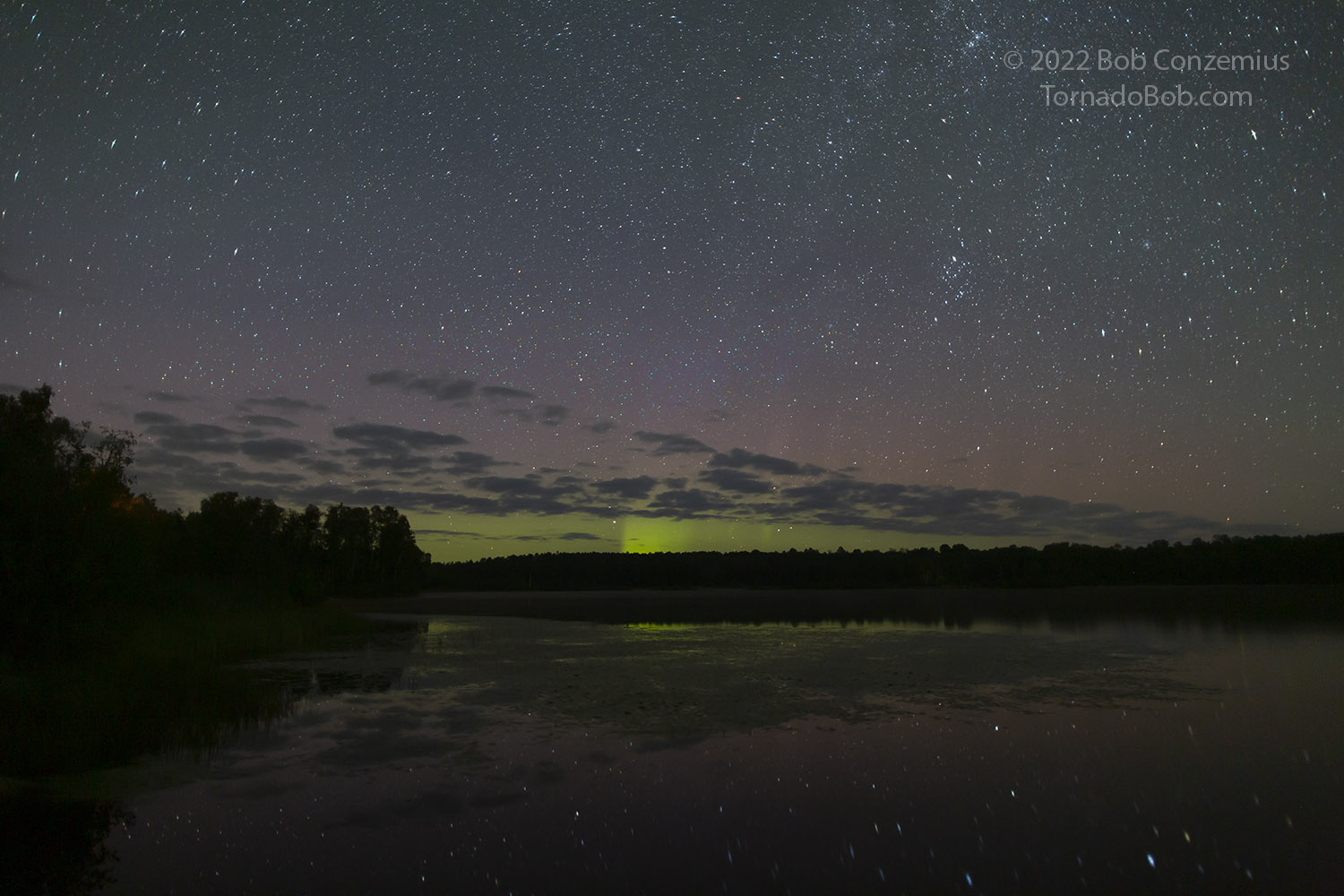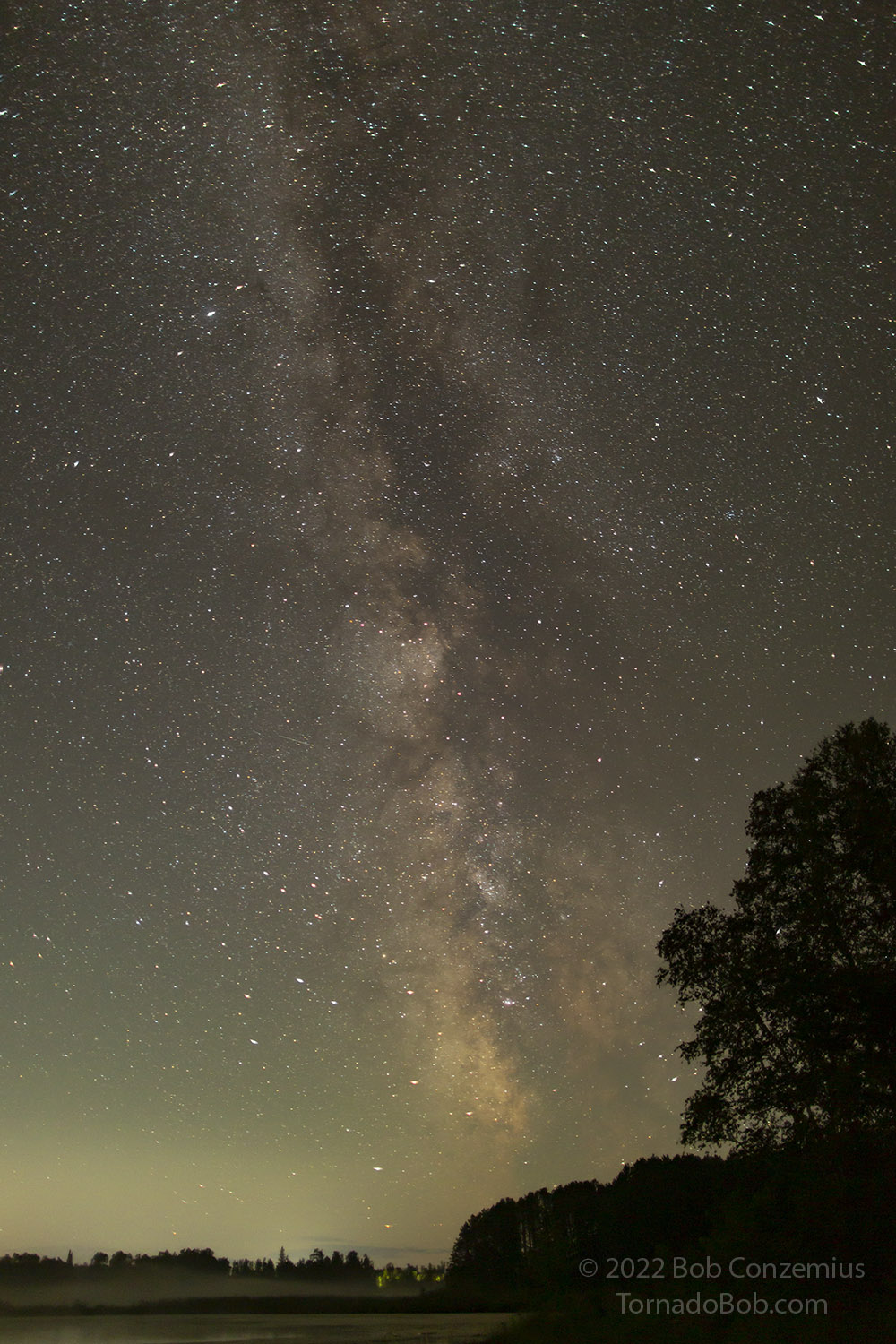August 21, 2022 Auroras
Chippewa National Forest
It was a Saturday night, and I had a chance to sleep in tomorrow morning, so I decided to shoot dark sky tonight. The solar wind conditions were somewhat decent but not spectacular. We had just had a couple coronal mass ejection (CME) impacts, but Bz (the north-south magnetic field component in the solar wind) was mostly north in the evening, so there was not much of a nighttime aurora show at all this week. There had been some auroras Friday night, and there would also be a little bit on Sunday night, but Sunday was my best day to rest. I got to Pughole Lake and saw a few clouds to the north, and they were obscuring the auroral band, so I pointed the camera straight up and took a couple Milky Way shots. I then aimed back north and got some aurora shots, then back south again to get the rest of the Milky Way. I waited for a bit for Bz to drop south, but it never did, so I headed back to town and was home before midnight.
Given that the sky was as dark as it could be for a starry night, I tried some pretty long exposures: 20 seconds at f1.4. The 500-second rule (500 divided by the focal length of the lens, 24mm) told me I could take 20-second exposures, but looking at them closely, I could see some very slight star trails. At the 1500x1000 resolution I display on this page, the star trails really aren't noticeable.
I also tried playing around with white balance. For the auroras, it seems a cooler color temperature of 3800-4200 K works best with my Canon 5d Mk III. The Mk II seems to need less of a color temperature adjustment, and I can shoot a little closer to sunlight white balance (5200 to 5500 K) and still get some decent yellow-green auroras. For the Milky Way shots, I tend to like the 5200 K (daylight) white balance a little better. It makes things look a little brown, but maybe that's what space dust looks like. It's hard to really know what the true color of the night sky is when there's no moon. When the moon is up, the sky looks more blue in my pictures.
 |
| The Milky Way above me. |
 |
| Auroral glow to the north. |
 |
| A slight bit of structure appears in the auroras. |
 |
| The Milky Way to the south. |
Back to Auroras | Home



